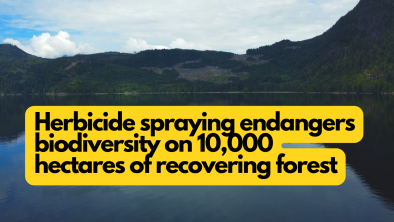Chemical-ban call creates buzz in beekeeping community
Thursday, May 29, 2014
Globe and Mail

One of the most important classes of insecticides used on crops in Canada is increasingly being blamed for wiping out populations of honey bees, leading to demands that the chemicals be taken off the market.
But Paul van Westendorp, provincial apiculturist for British Columbia, says more scientific research is needed before concluding that the insecticides known as neonicotinoids are responsible for the widespread destruction of bee colonies.
“We need more information. We have to base it on science,” he said Thursday when asked if he supported a call by the Wilderness Committee to ban the use of the pesticides in B.C.
Mr. van Westendorp said there is a “slow, but steady body of evidence” that neonicotinoids are responsible for colony collapse disorder (CCD), in which entire colonies of bees die off. But he said the scientific case against neonicotinoids hasn’t fully been made yet, even though the European Union recently moved to restrict use of some of the chemicals.
Neonicotinoids, which are used in 120 countries, capturing 30 per cent of the global insecticide market, are one of the most important tools farmers have, Mr. van Westendorp said.
“They are widely used because they are so darn effective,” he said of the chemicals, which are mostly used to treat seeds before planting. “They attack the central nervous system of the insects … [but] they are very safe to be used around us, our pets and livestock.”
Mr. van Westendorp said a large dose of neonicotinoids will kill any insect, but the chemicals are typically applied to seeds in minute doses, which have long been thought to be safe for bees and other pollinators. The emergence of CCD as a problem, starting in 2005, has increasingly been blamed on neonicotinoids, however.
Mr. van Westendorp said there is a theory that even at low levels the insecticides may cause severe nerve damage in bees, leading to “premature dementia,” in which bees lose the ability to find their hive.
“The bees … get lost and die of exposure and there is some suspicion [that neonicotinoids are to blame],” Mr. van Westendorp said. “There has never been scientific evidence [of that link] … but it’s pointing in that direction.”
However, Gwen Barlee, policy director of the Wilderness Committee, said there isn’t any doubt that neonicotinoids are killing bees and she called on the government to ban the chemicals. “It’s a huge concern in B.C.,” she said.
“These chemicals are used extensively. They are profoundly toxic to bees and other wild pollinators.”
Ms. Barlee said the over-winter loss of bees in B.C. has ranged from 18 to 27 per cent in recent years, up from 10 to 15 per cent, and in the Fraser Valley, where there are extensive crops, it has been as high as 80 per cent.
She pointed to a recent Harvard University study that found sub-lethal exposure to neonicotinoids caused six of 12 bee colonies to collapse, while a control group of hives that did not get exposed had only one die-off. “We’re going to have a silent spring unless we ban neonicotinoids,” Ms. Barlee said.
Pierre Petelle, vice-president, chemistry at Croplife Canada, a trade association, said such concerns aren’t grounded in science. He dismissed the Harvard study, saying the researchers “exposed bees to an unreasonable level of insecticide,” six to 10 times higher than what would be encountered on treated fields.
Mr. Petelle said neonicotinoids are vitally important to farmers and can be used in a safe and responsible manner. Asked what would happen if there were an outright ban on neonicotinoids, he replied: “It would be tremendously devastating to agriculture.”
Photo: An inspector for B.C.’s Ministry of Agriculture studies bees, whose numbers have been in steep decline in recent years.


